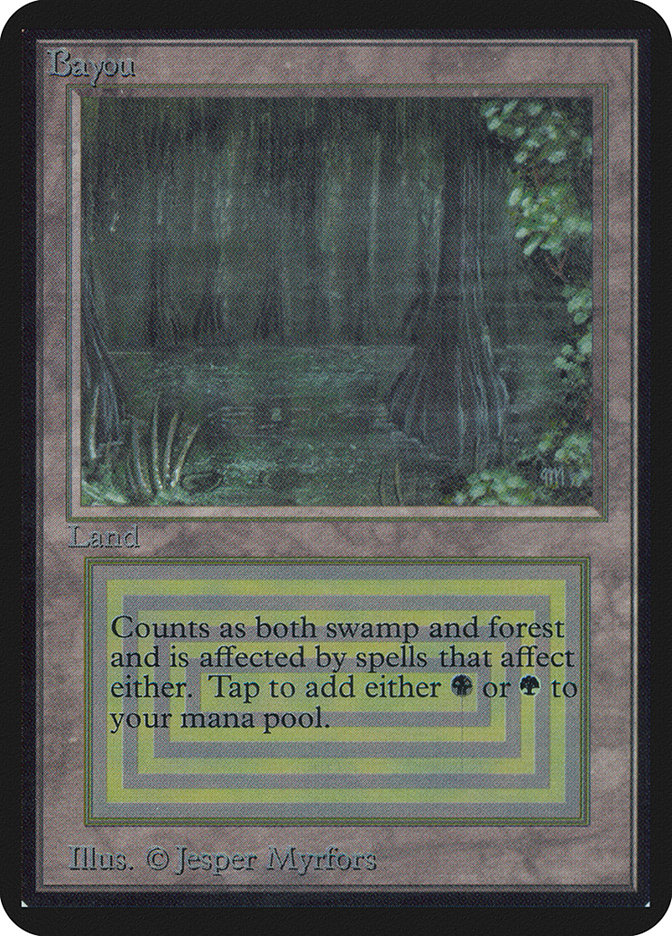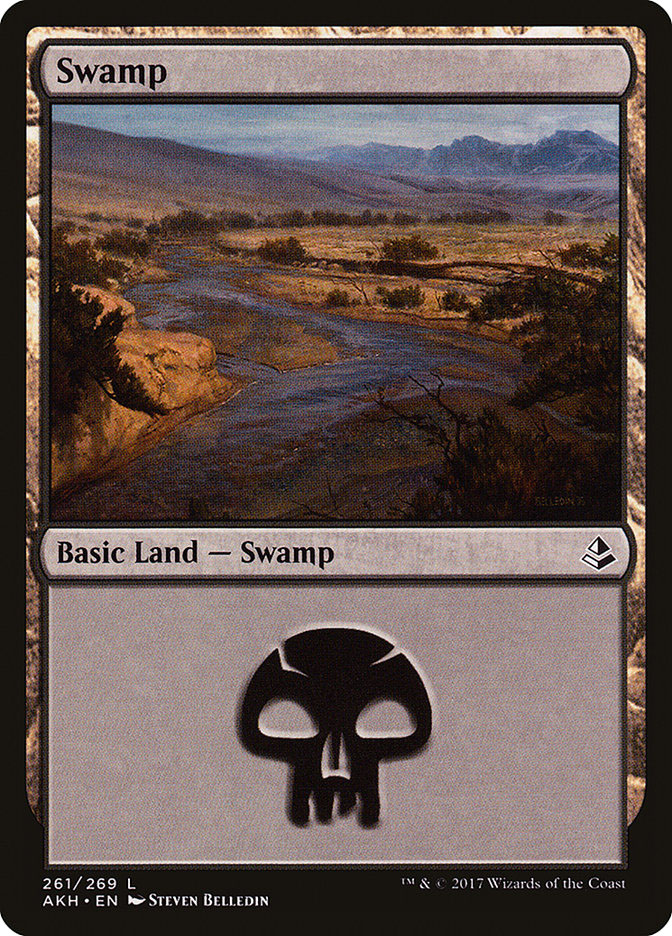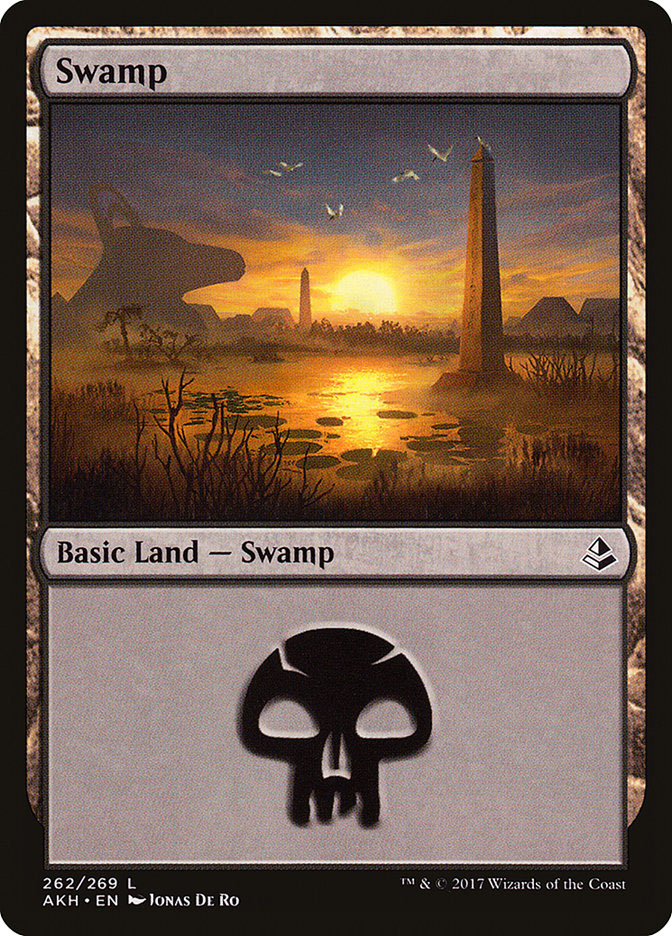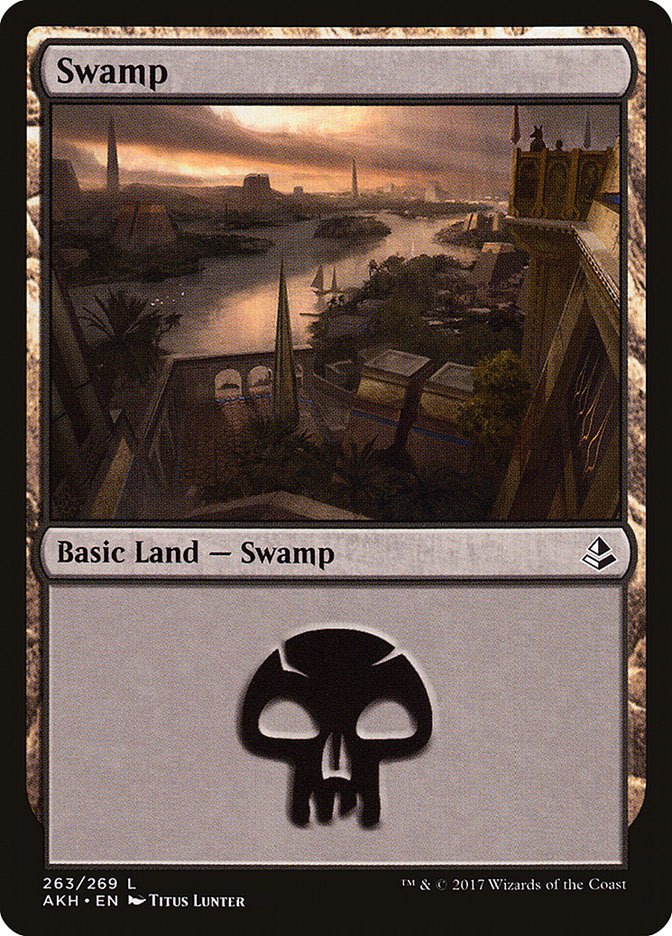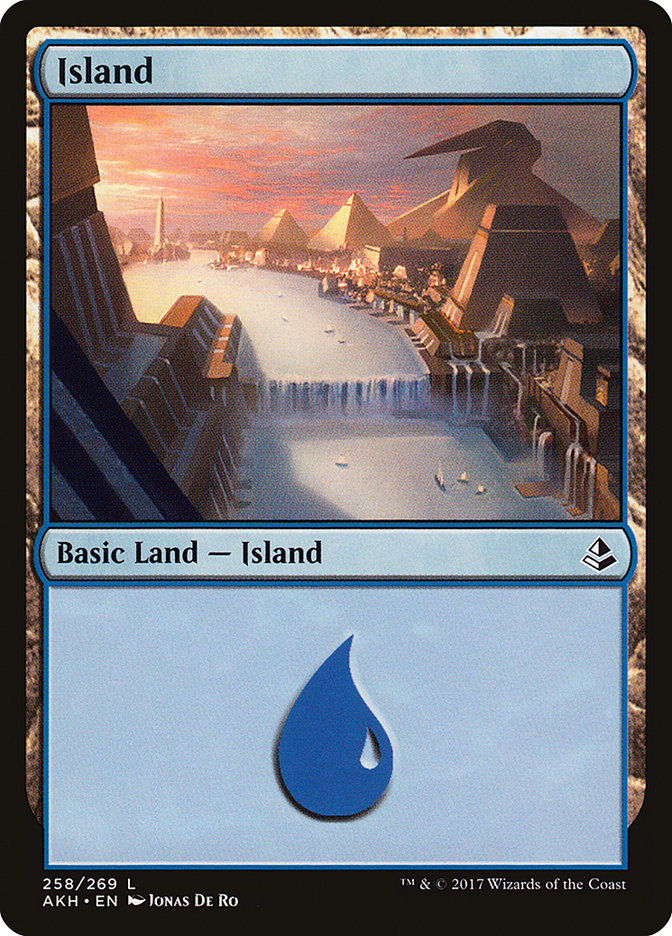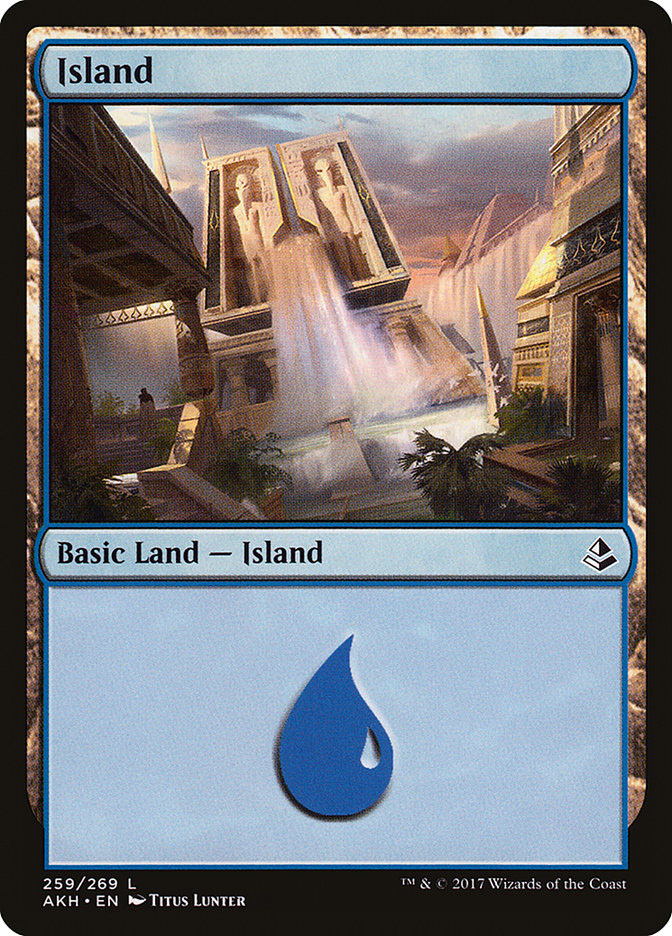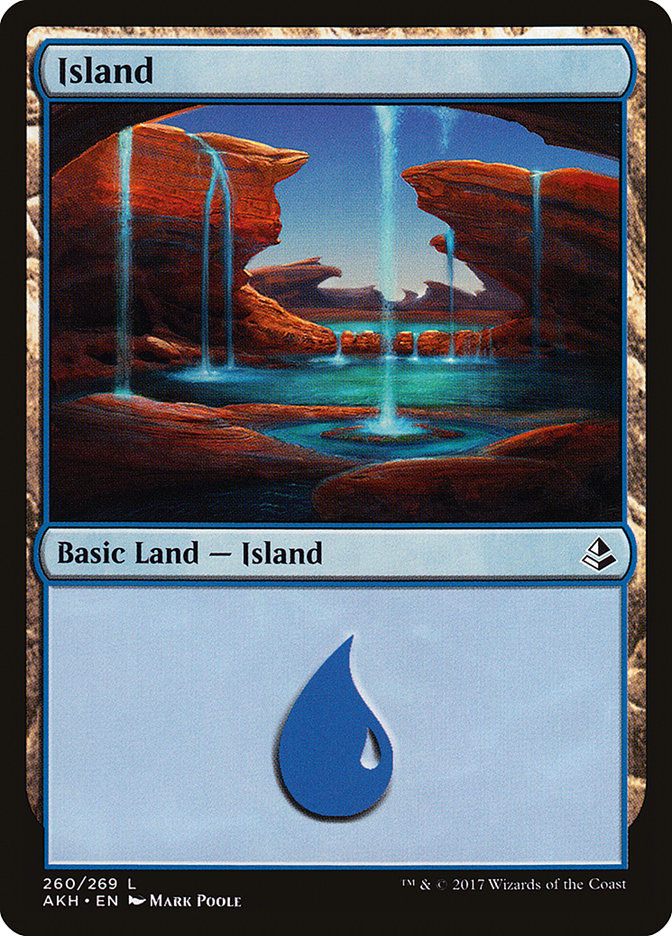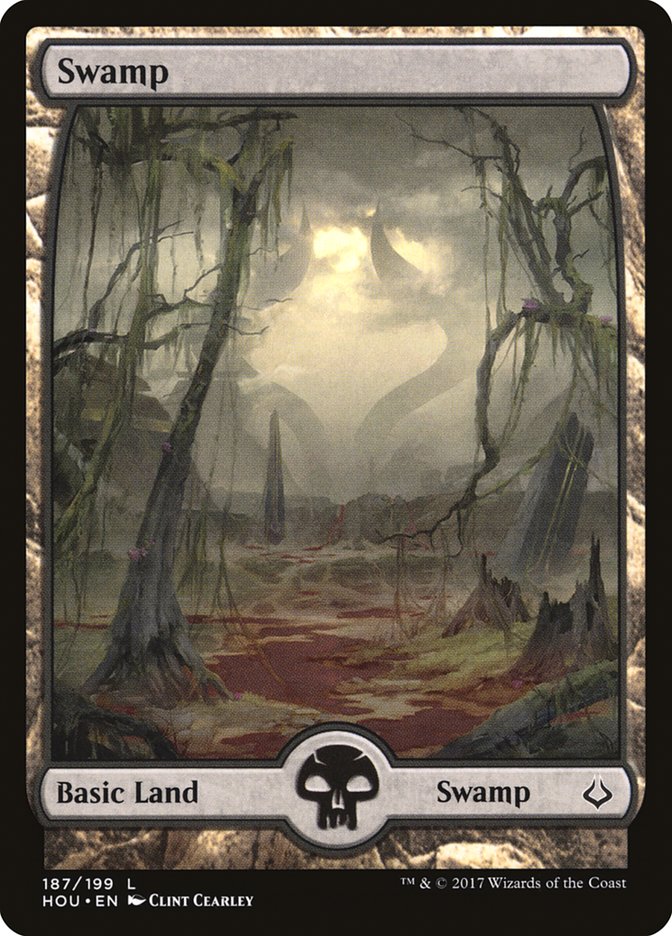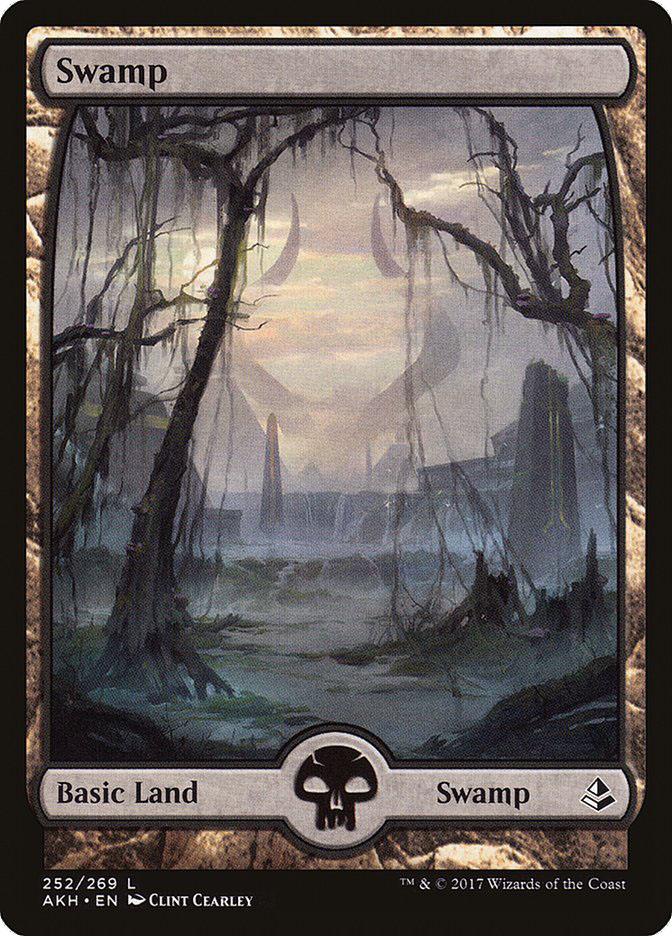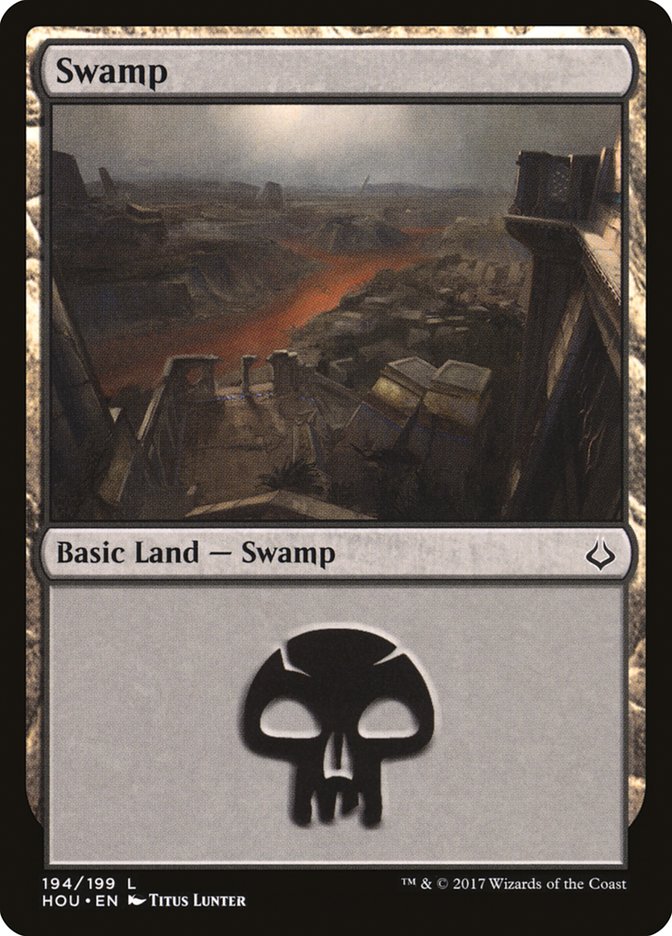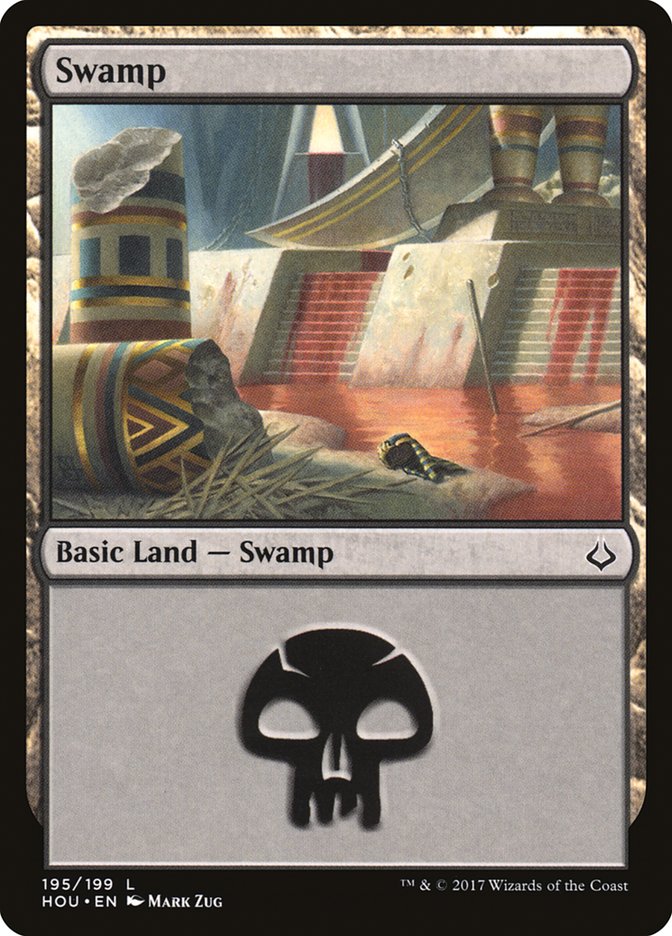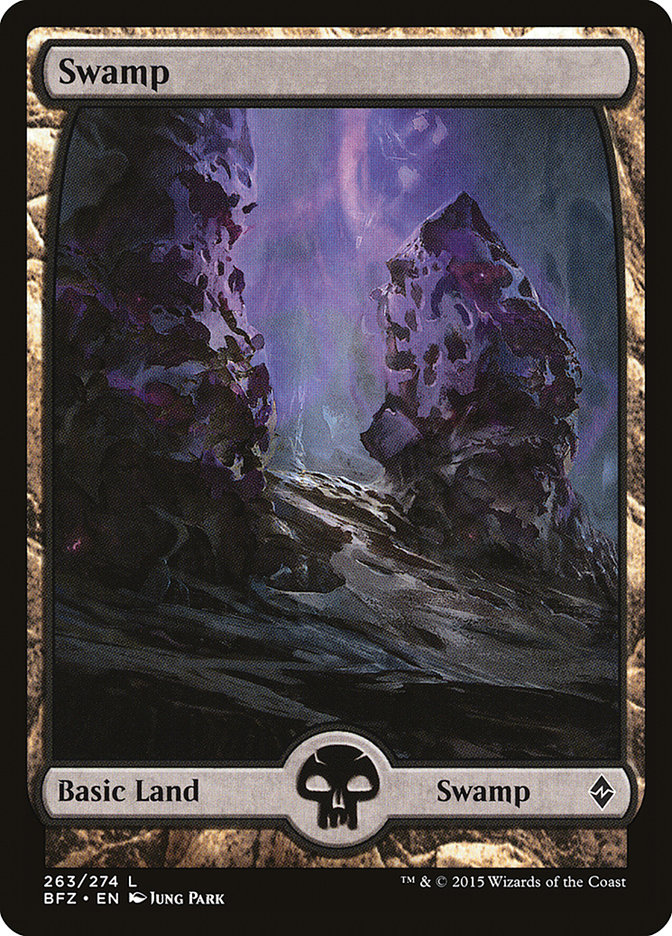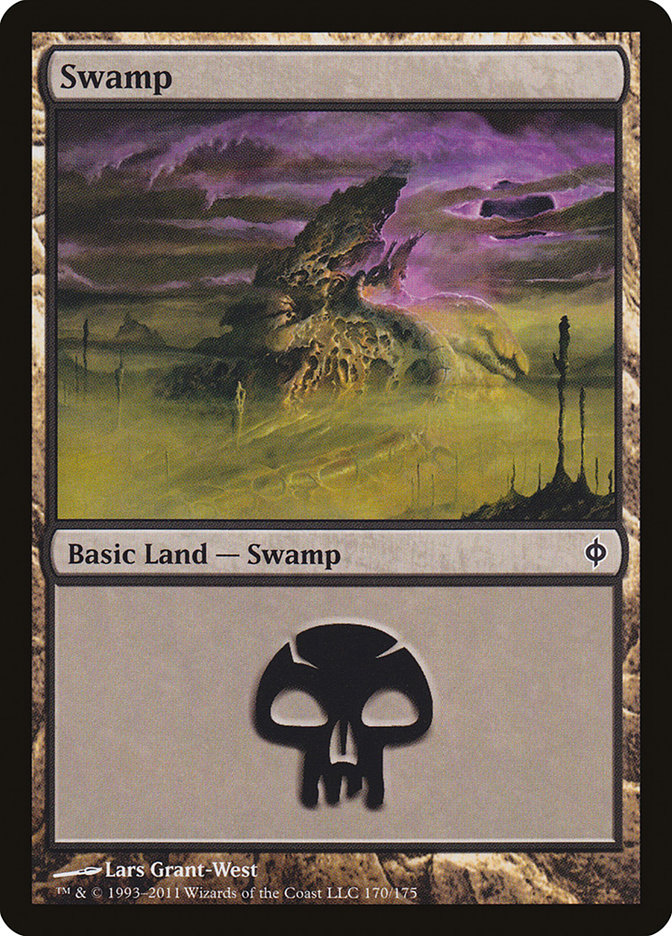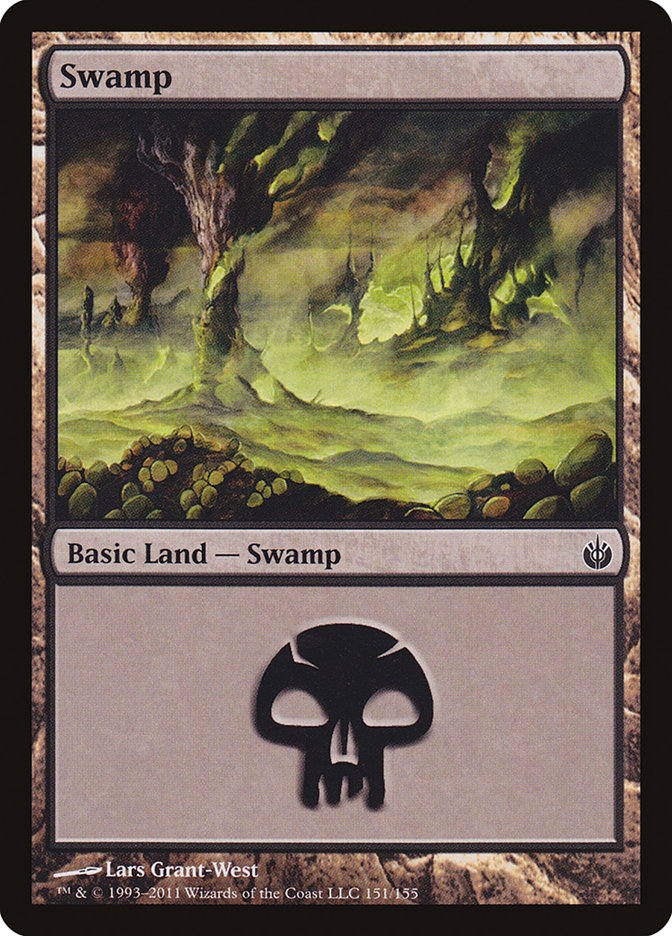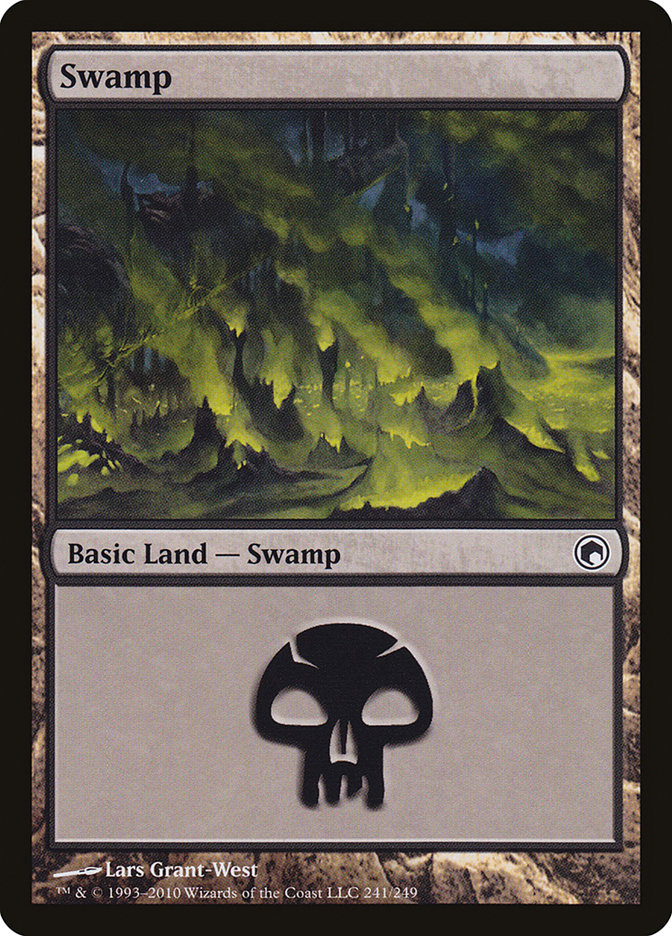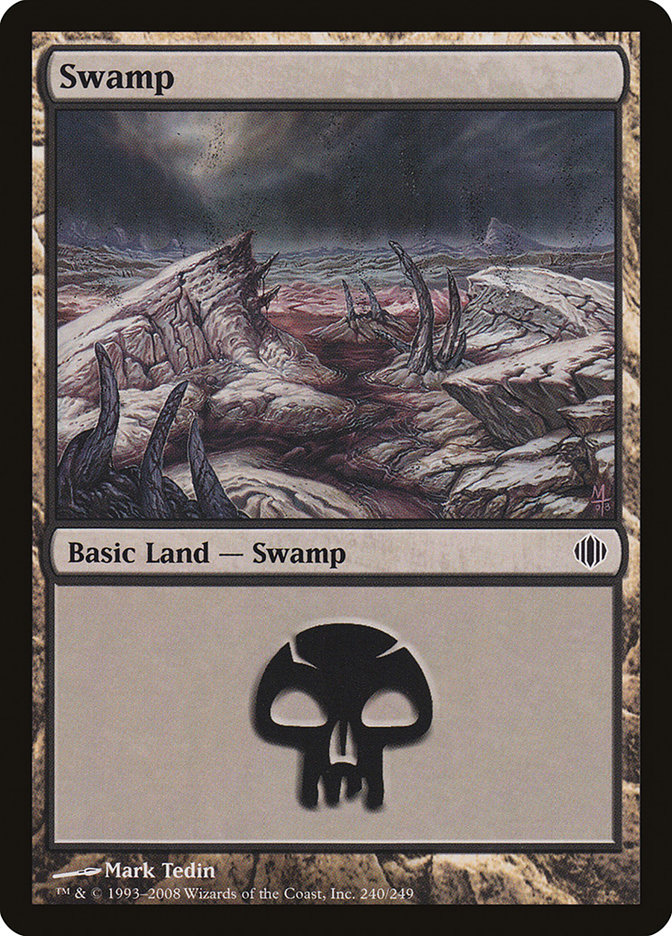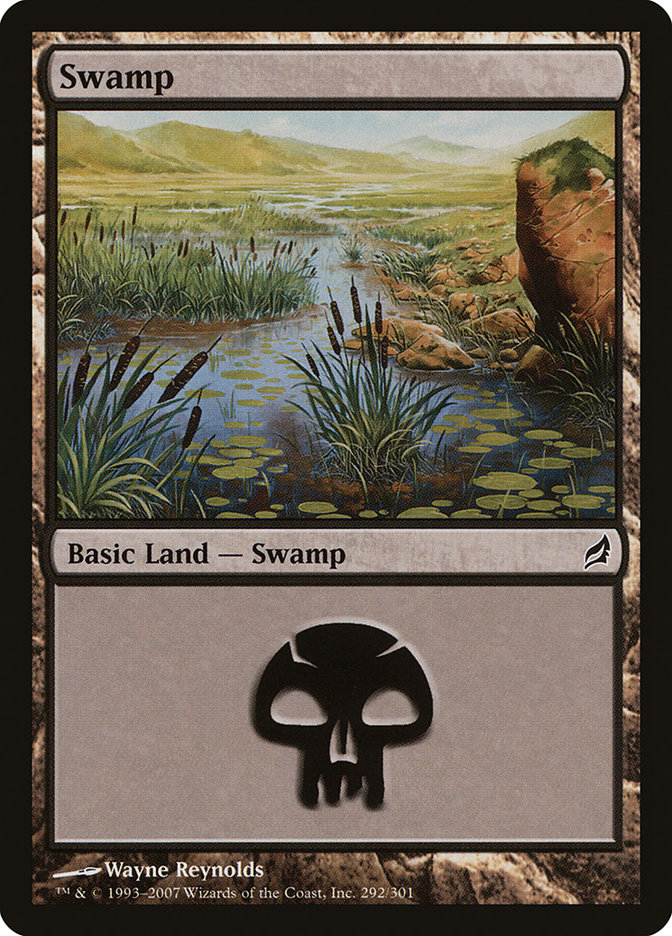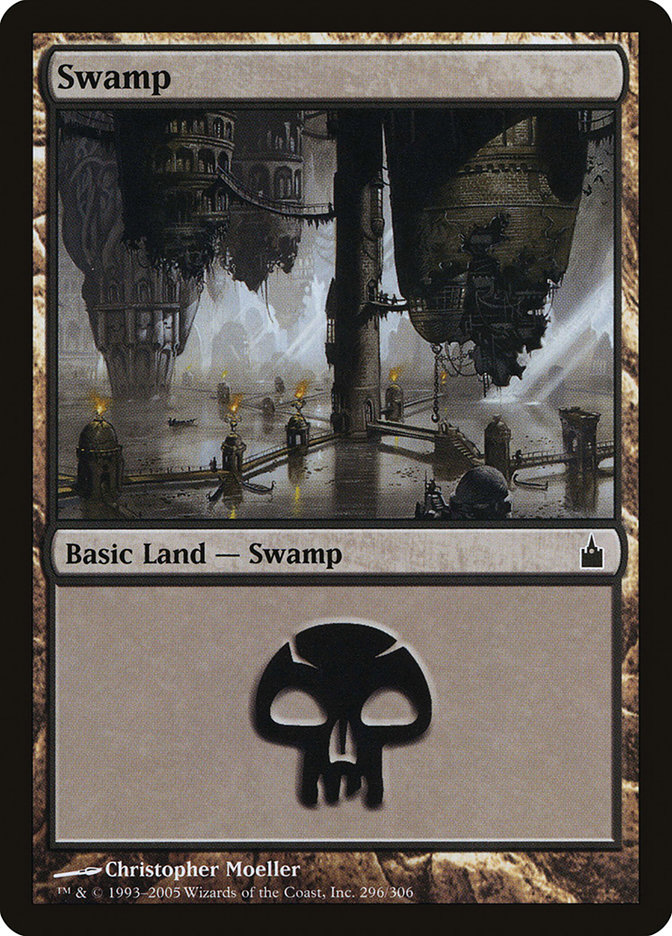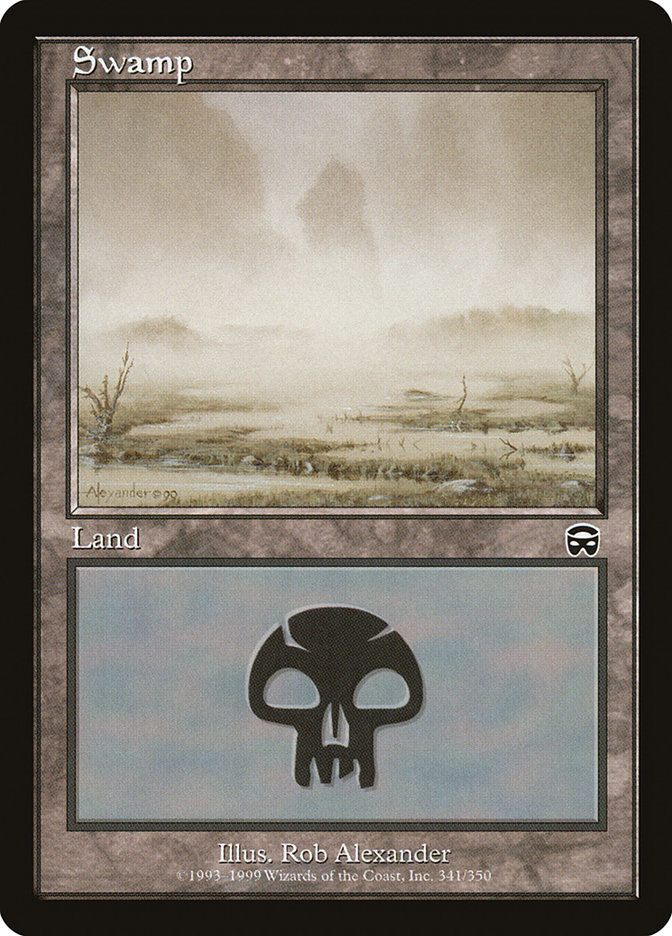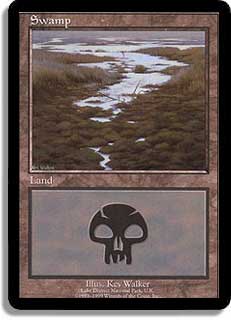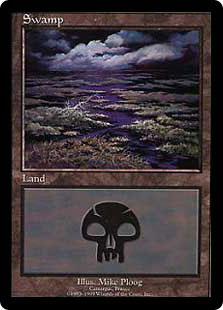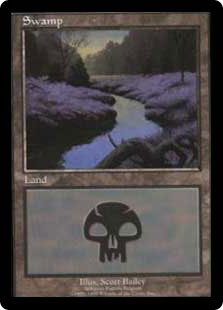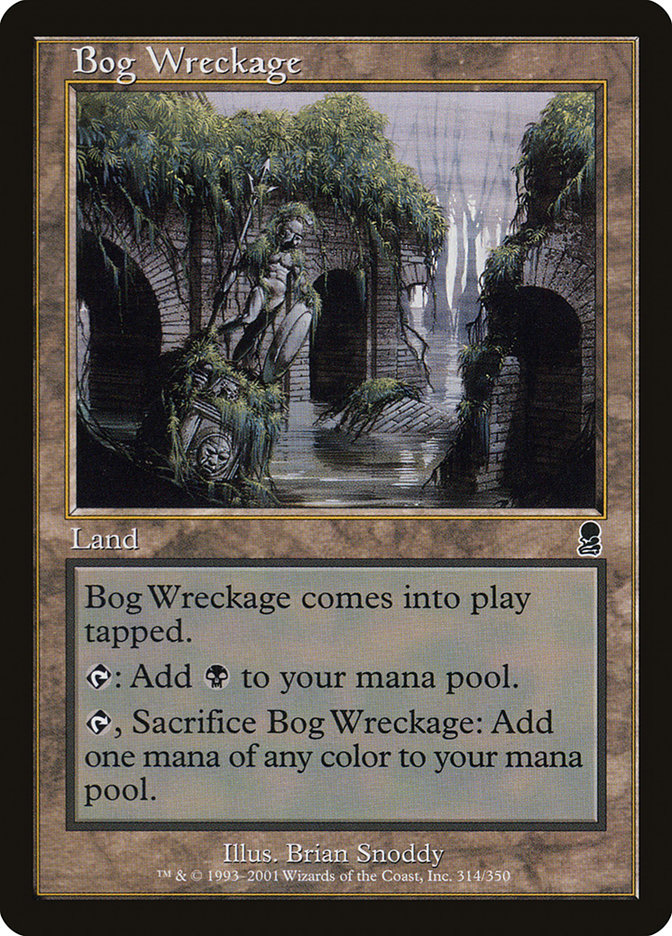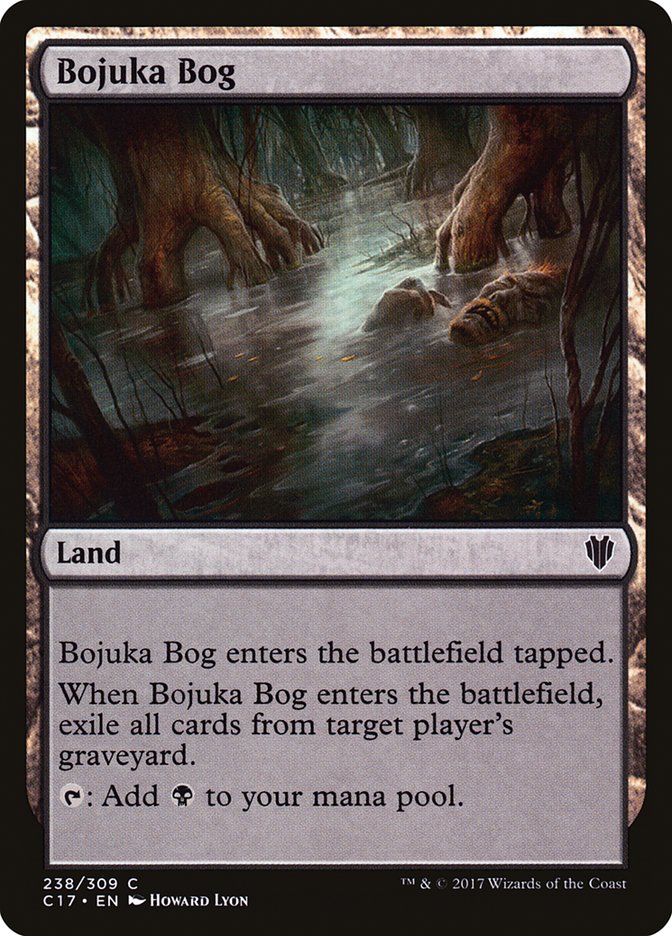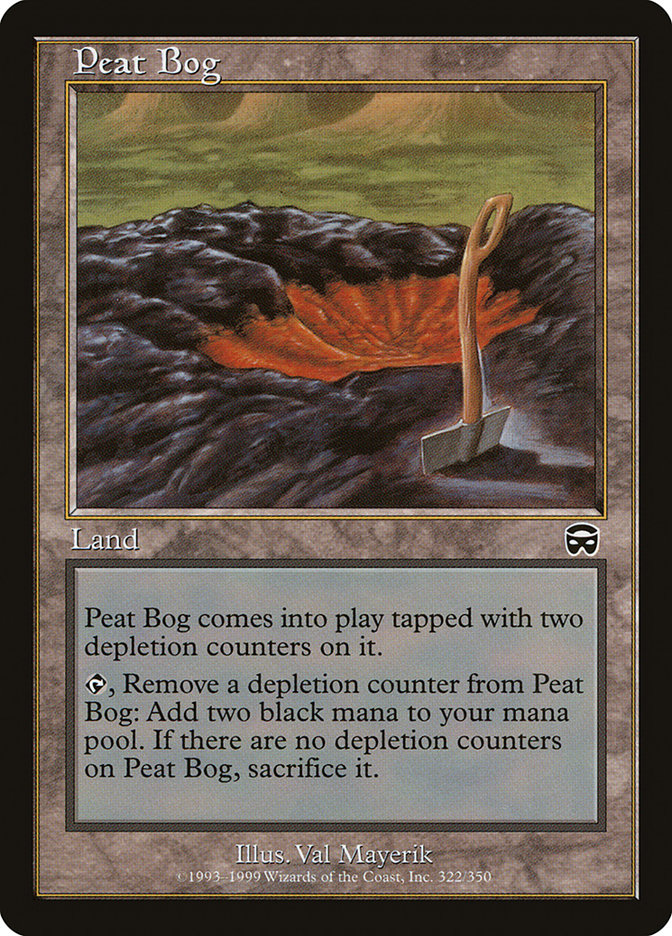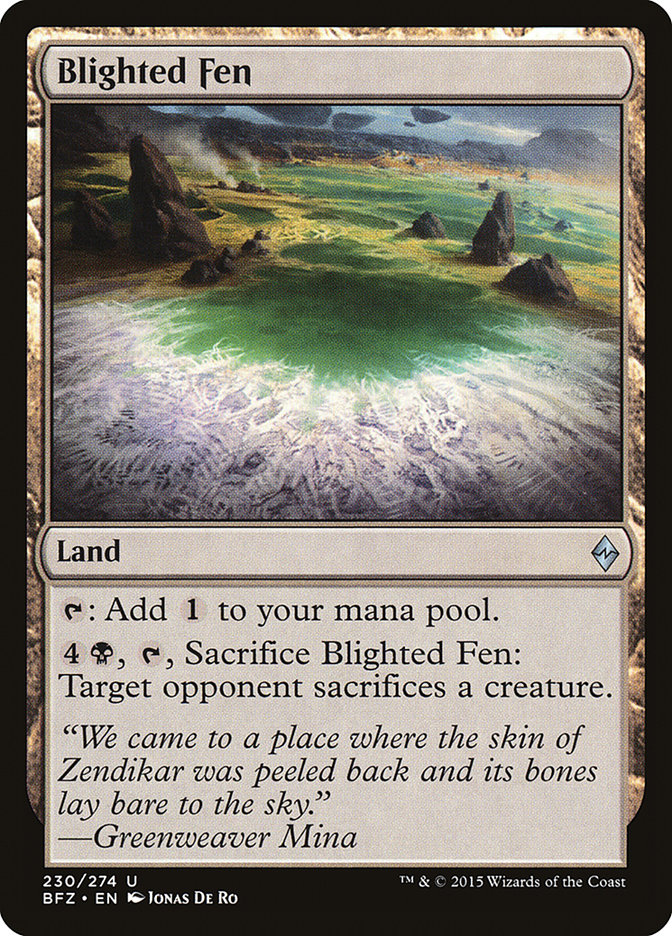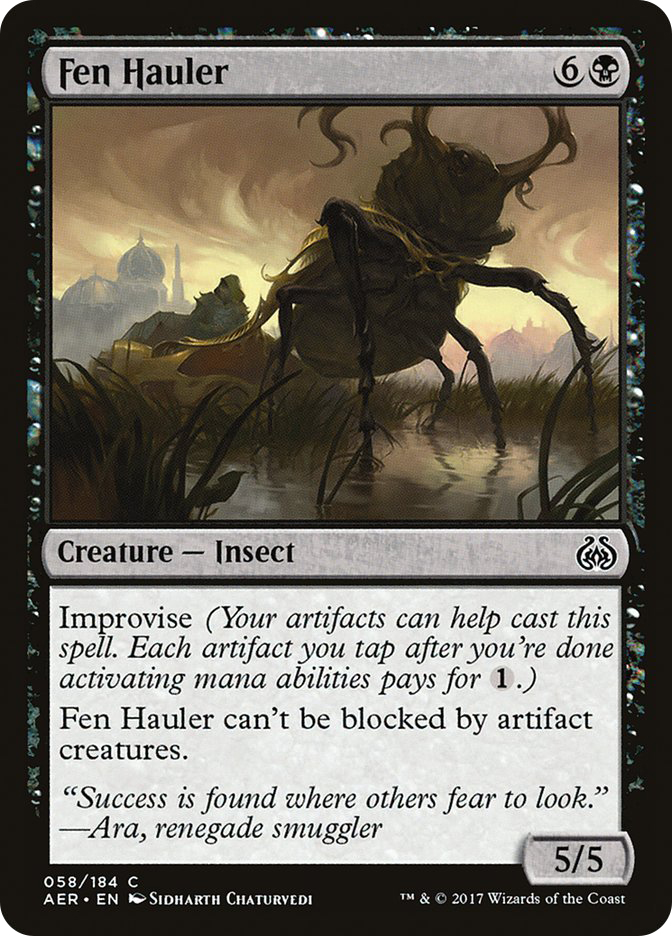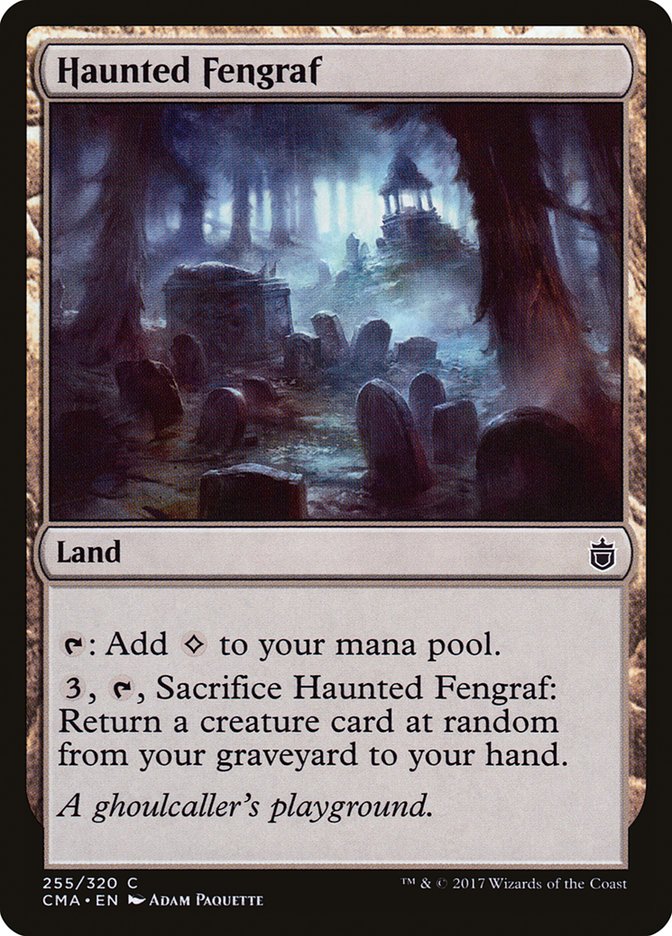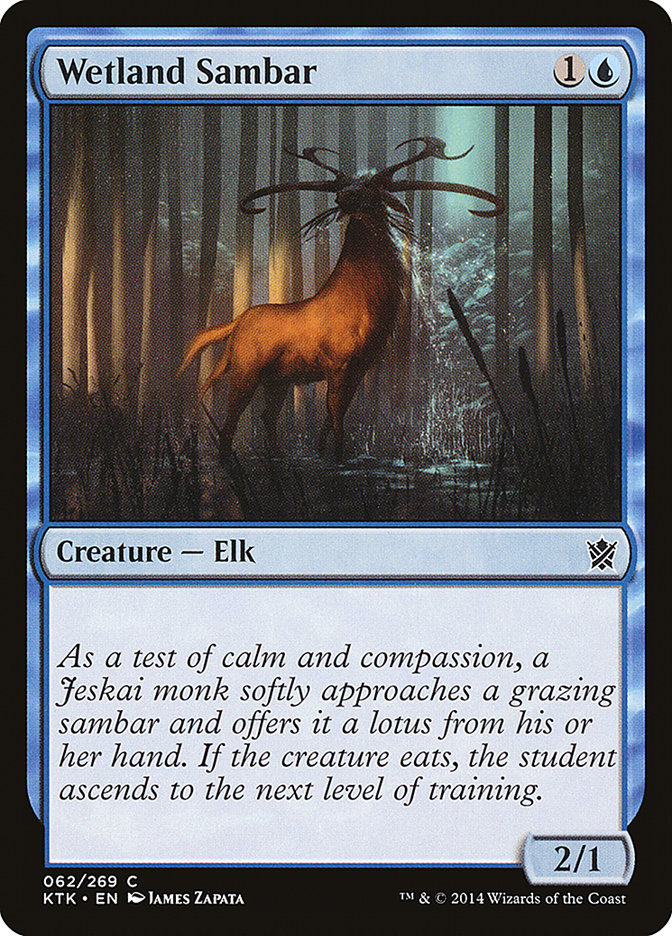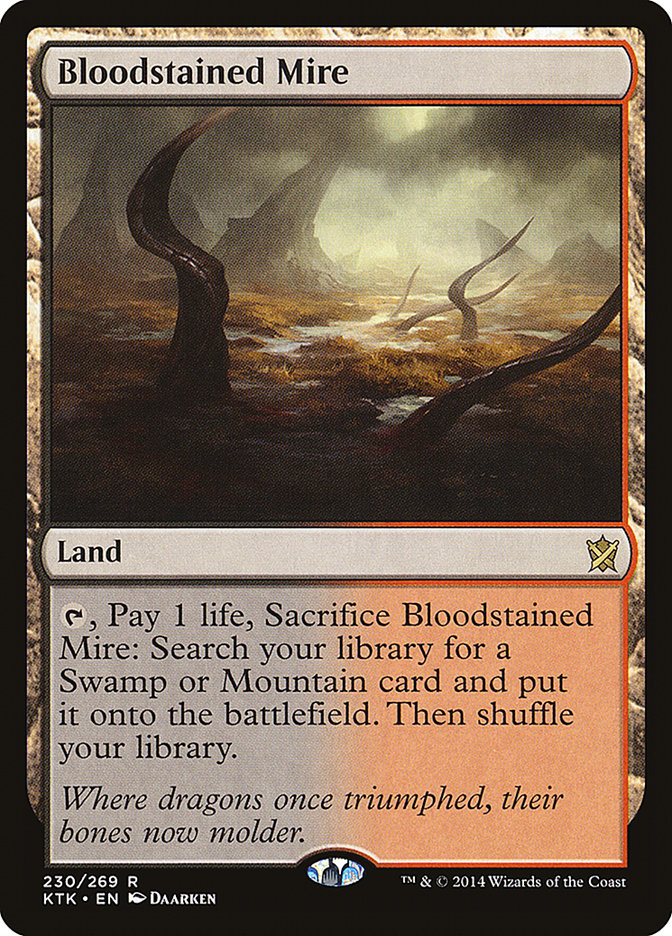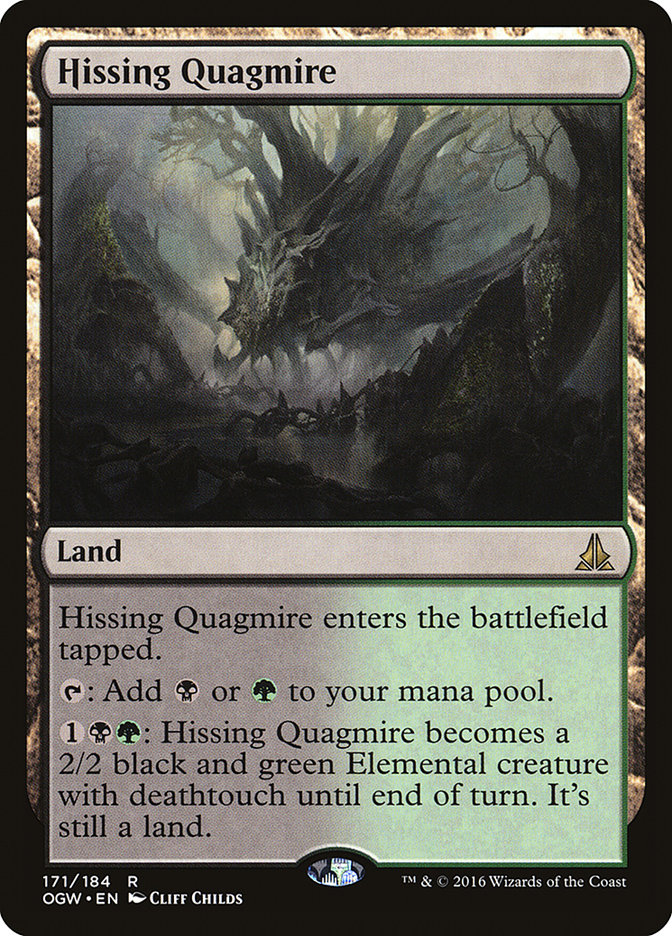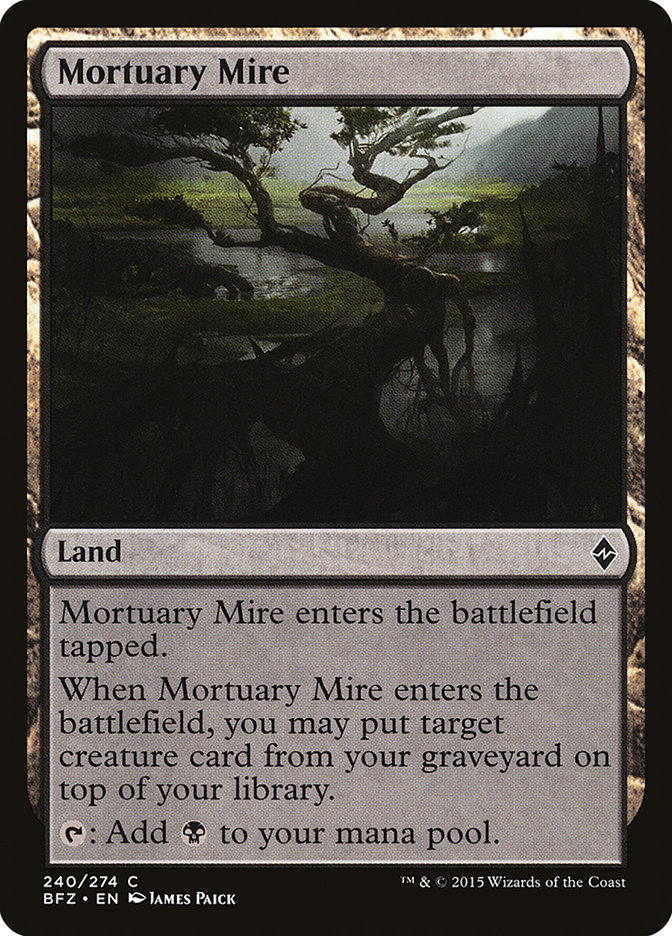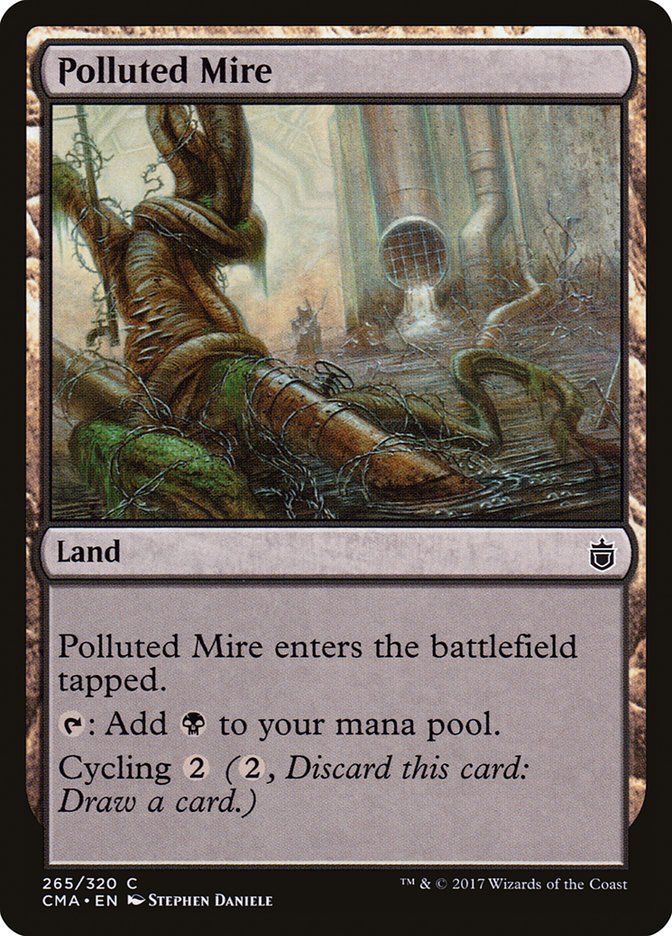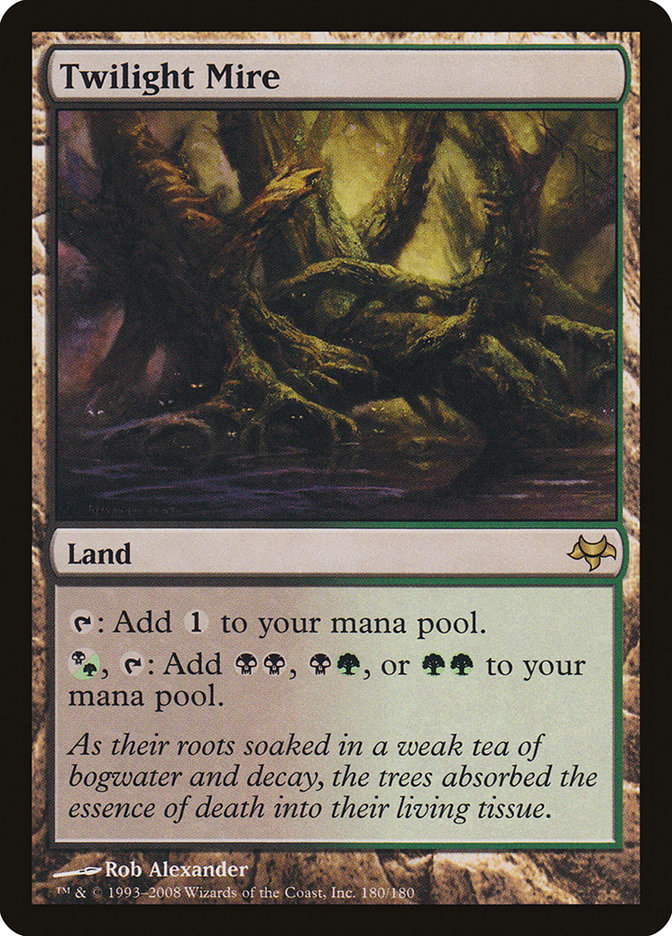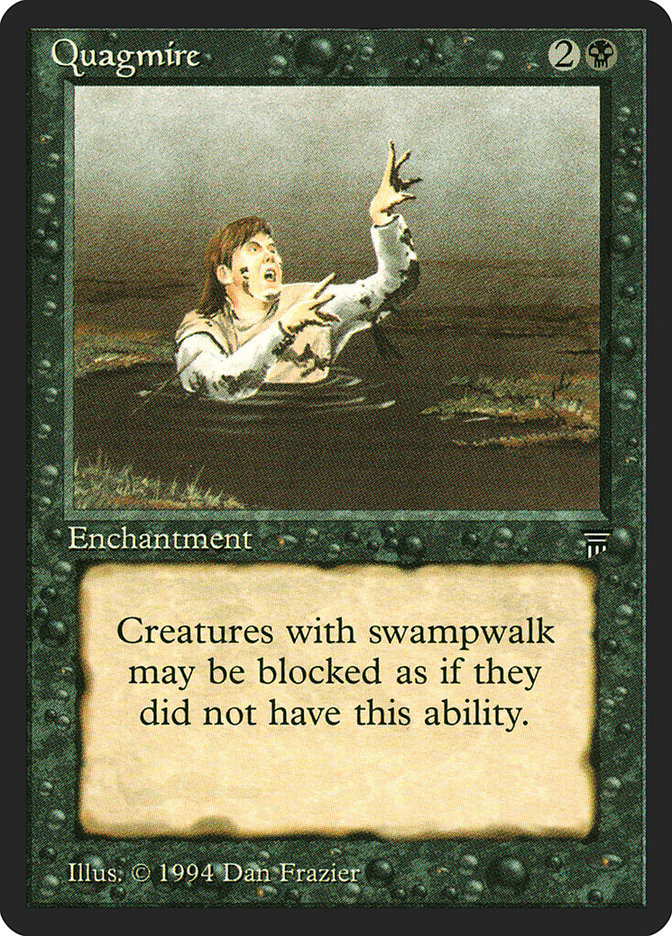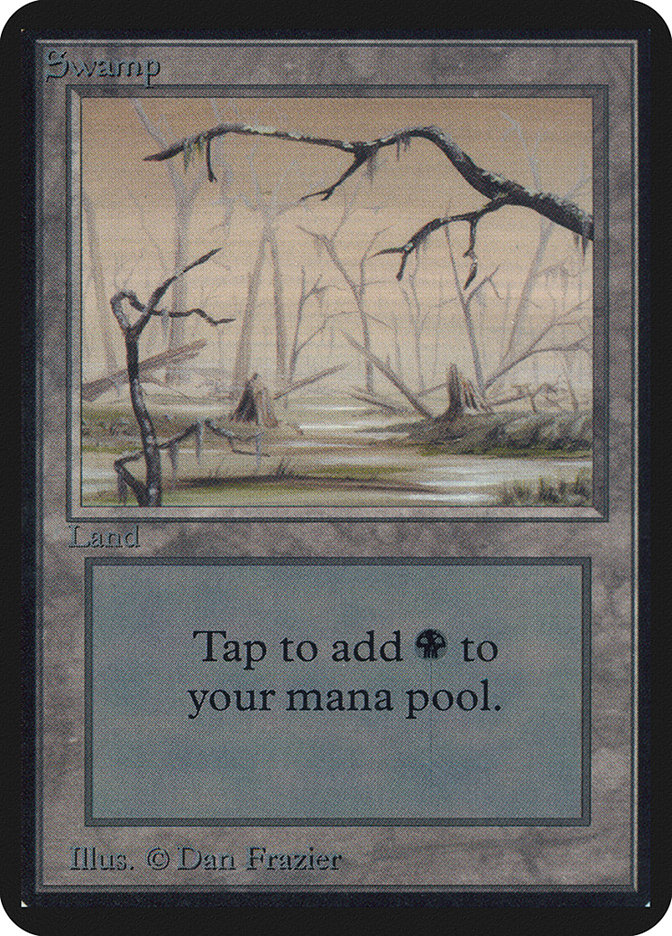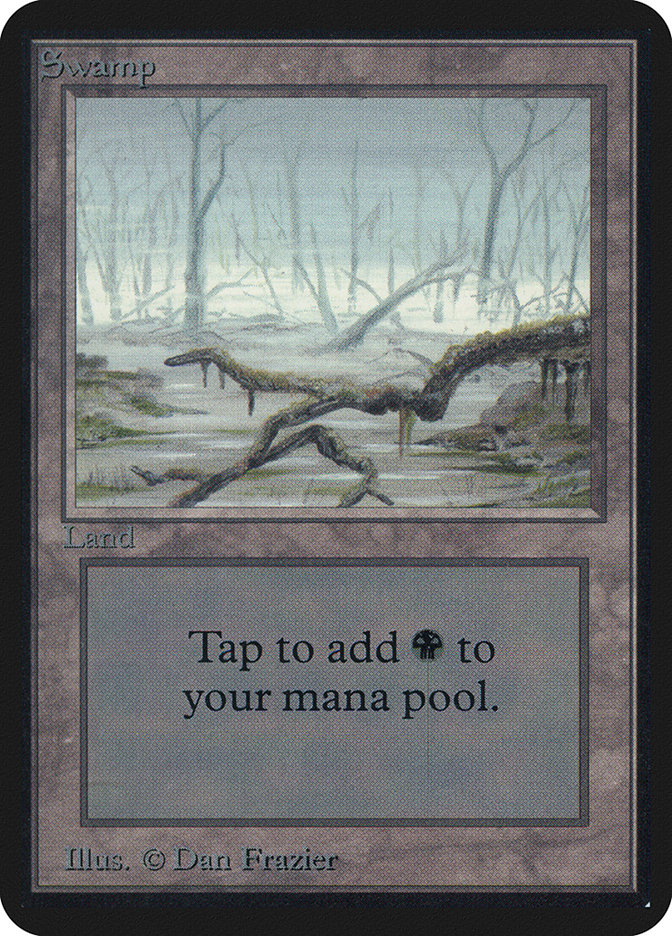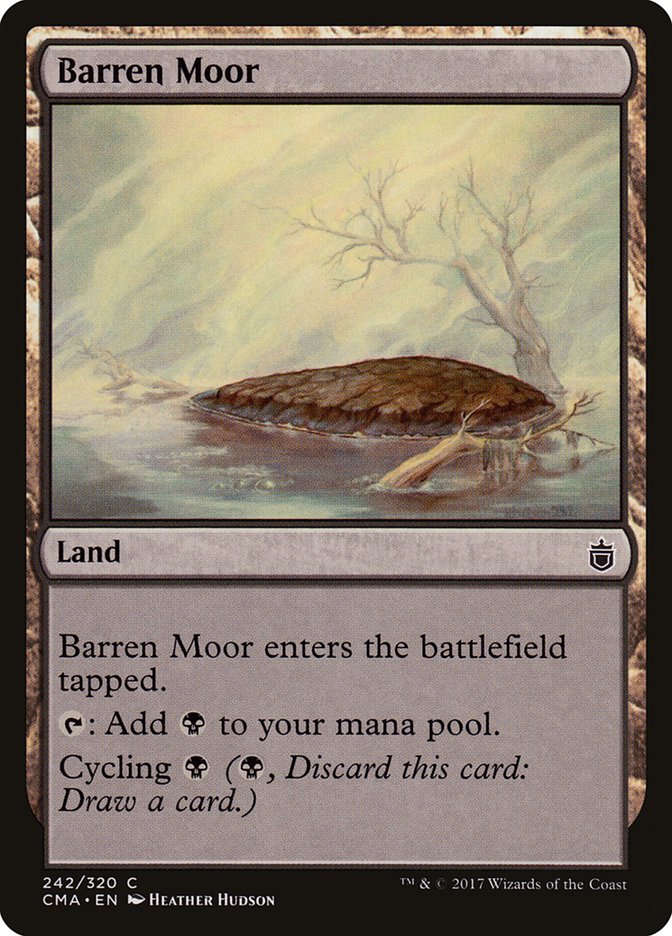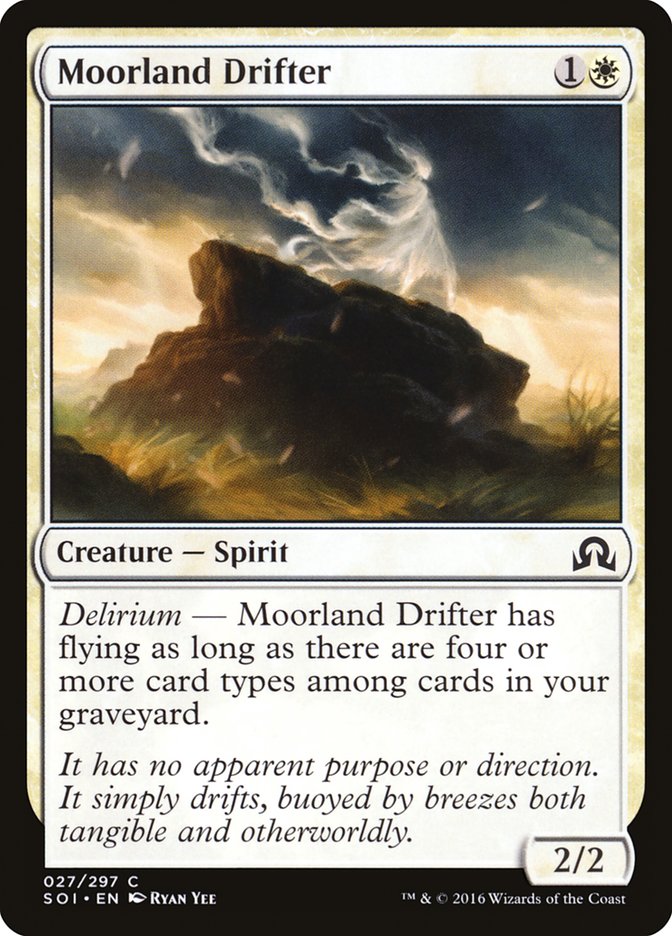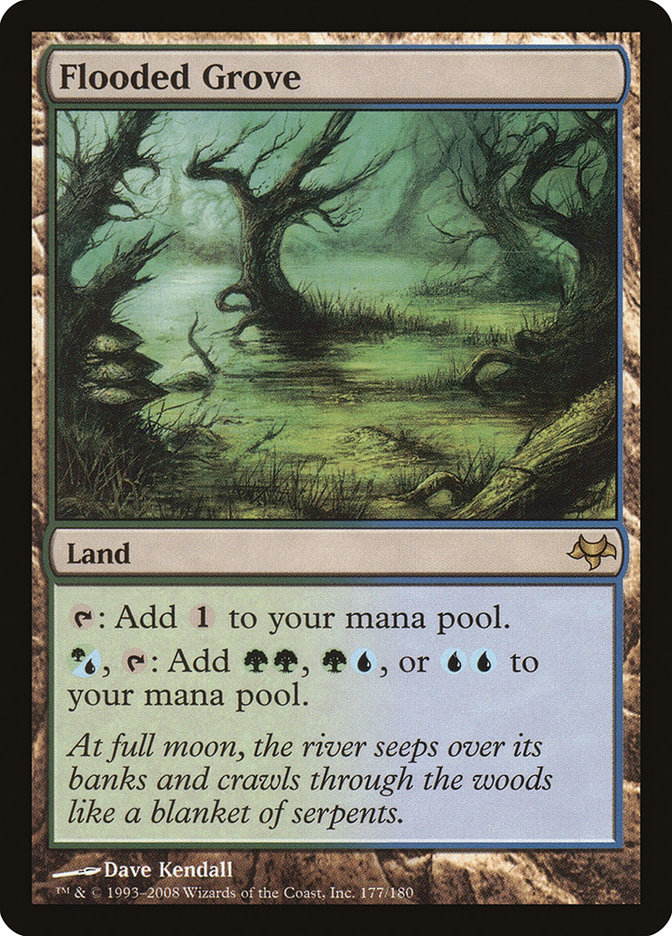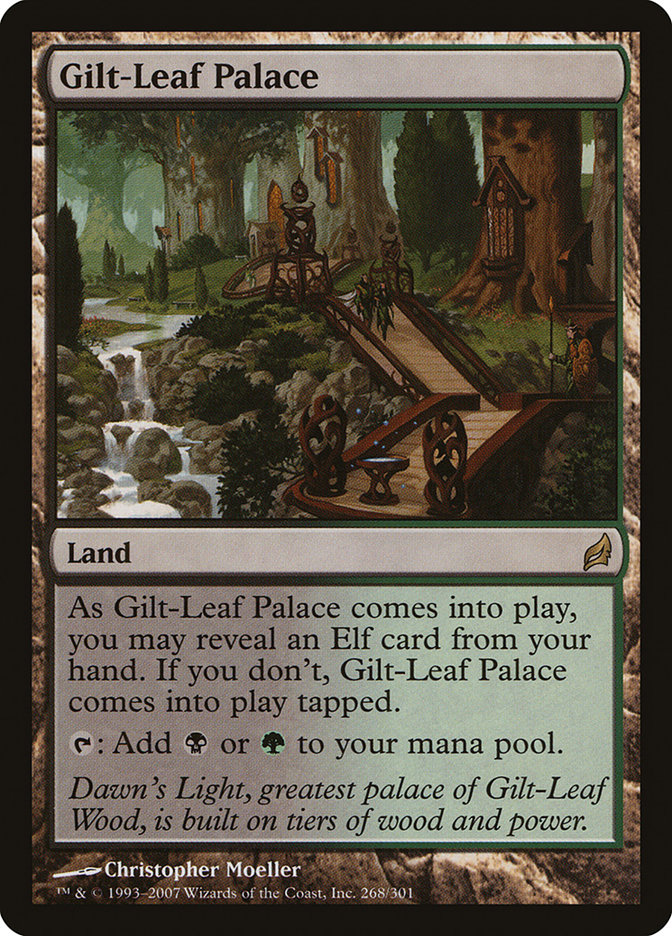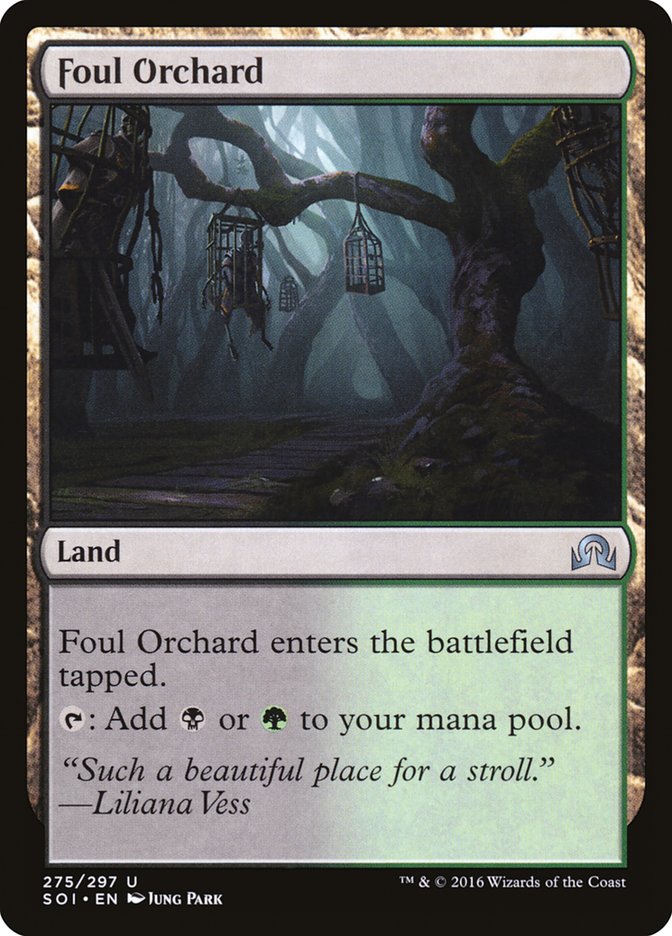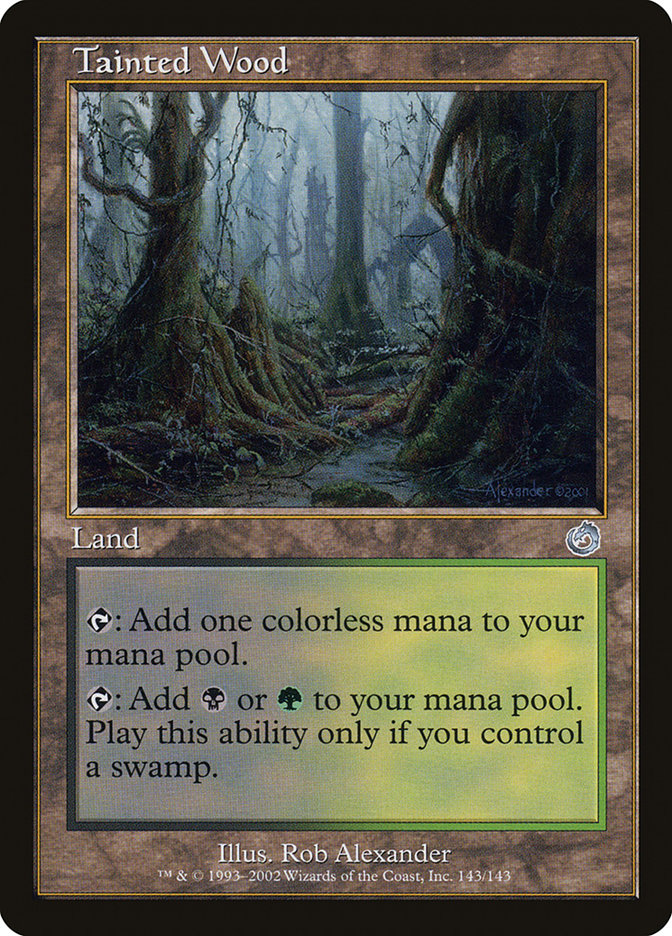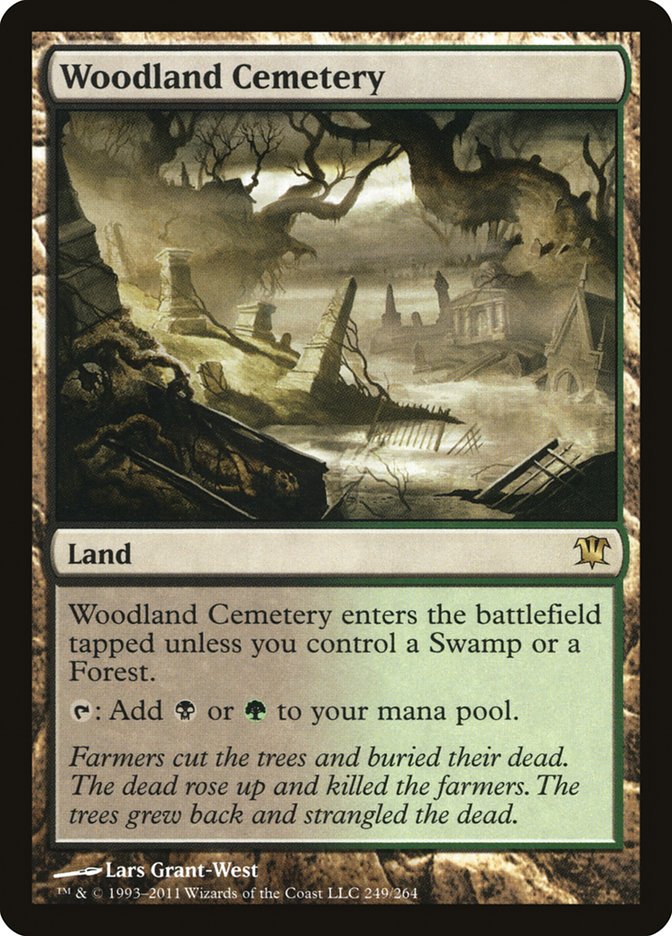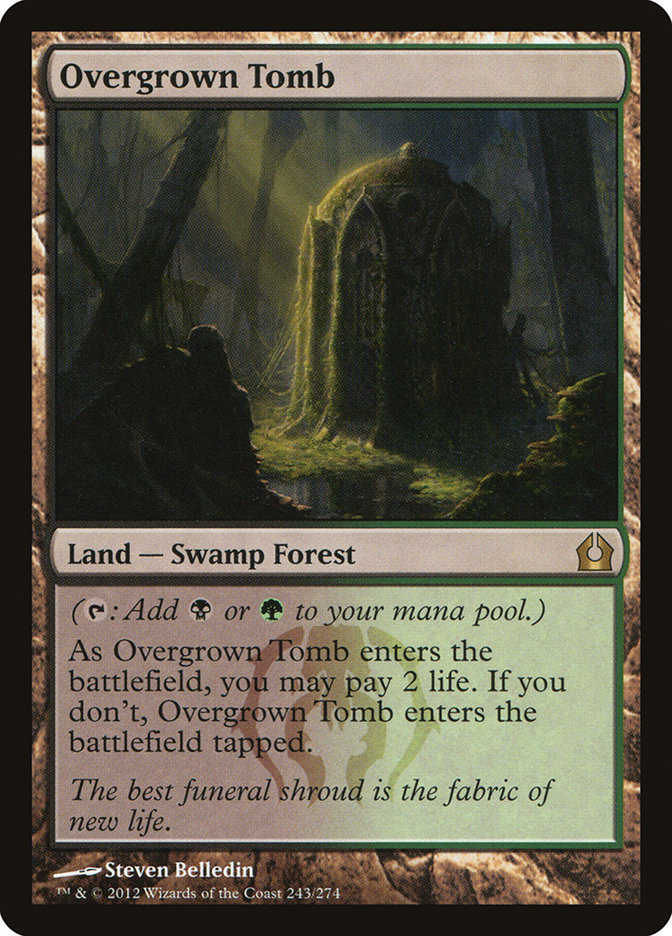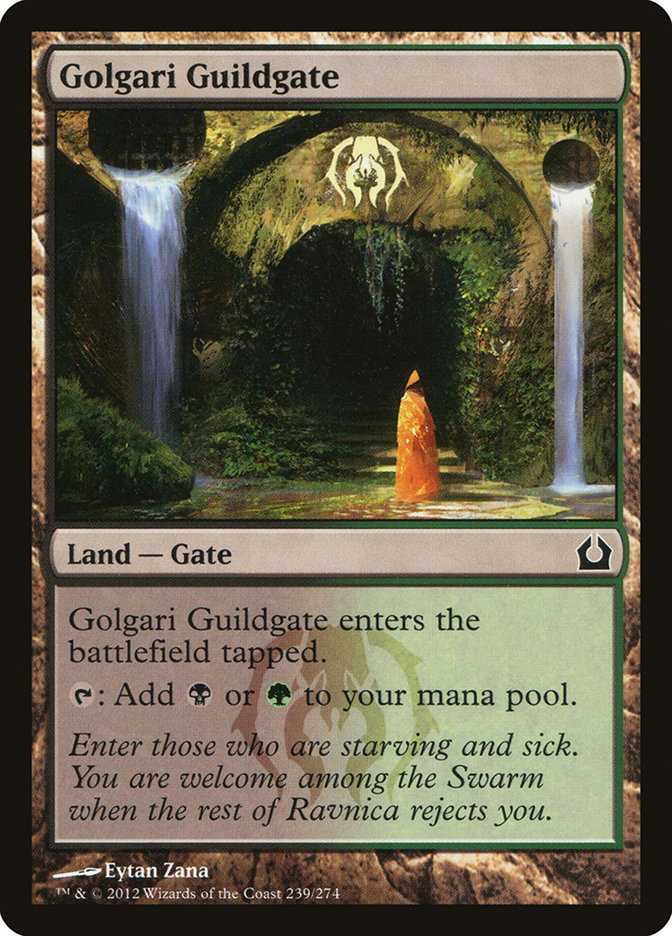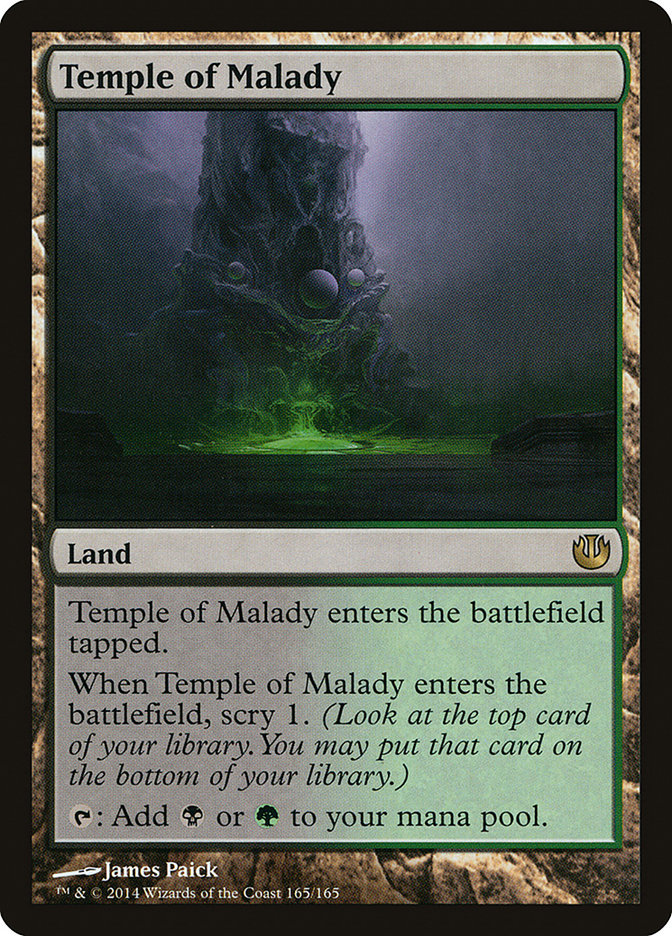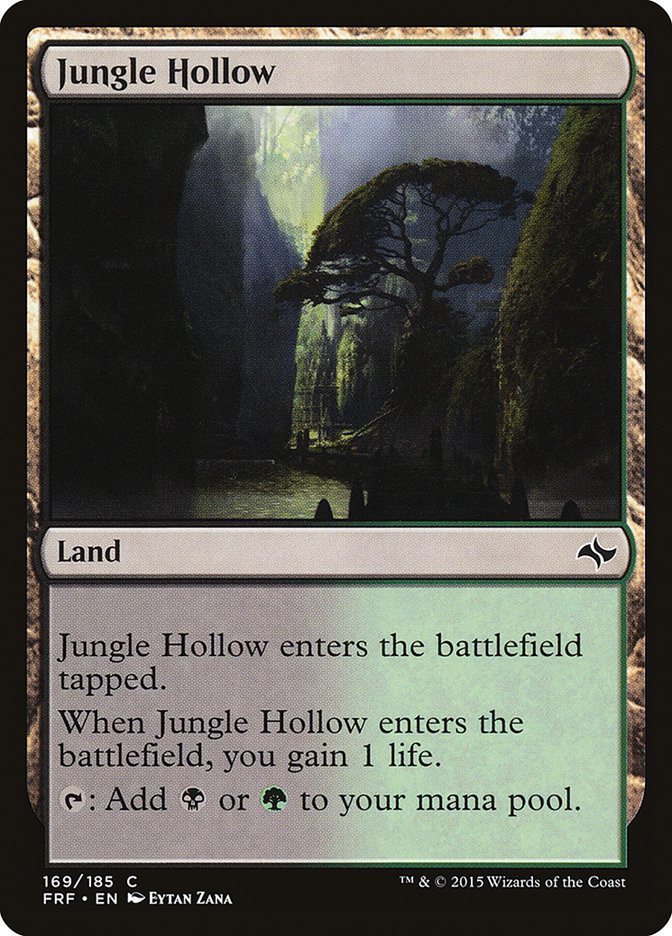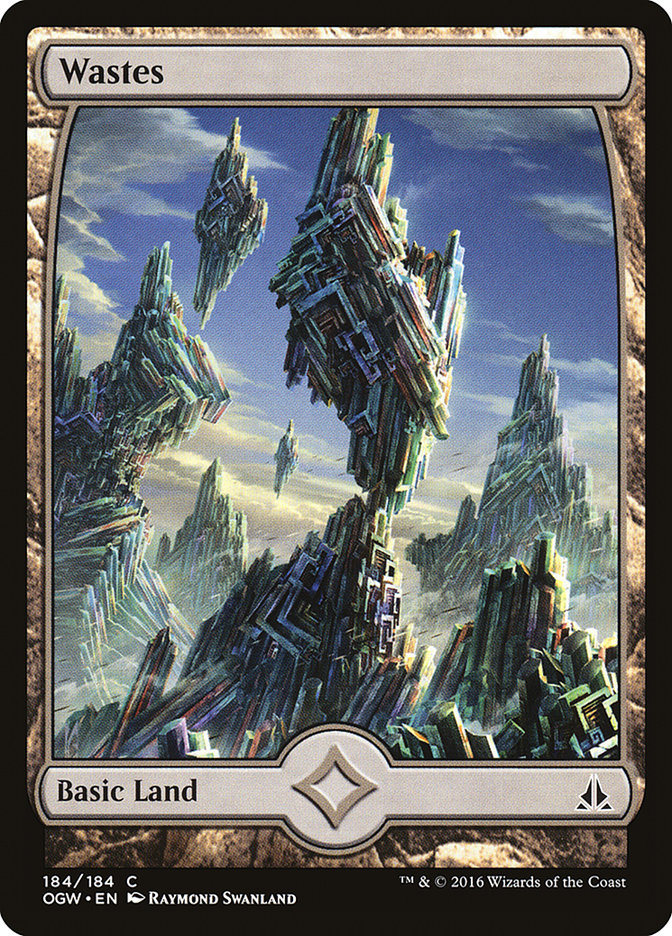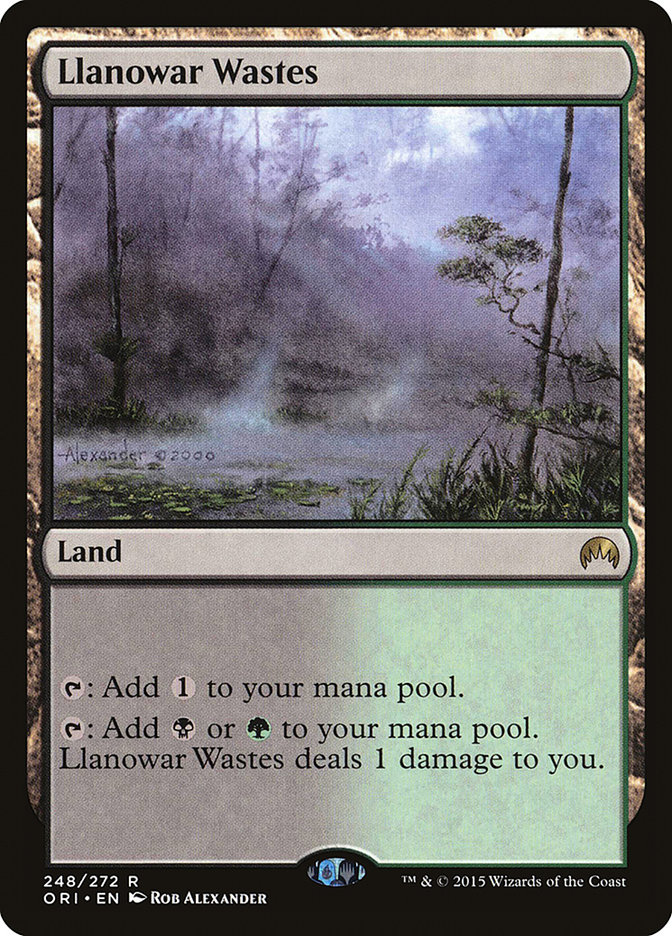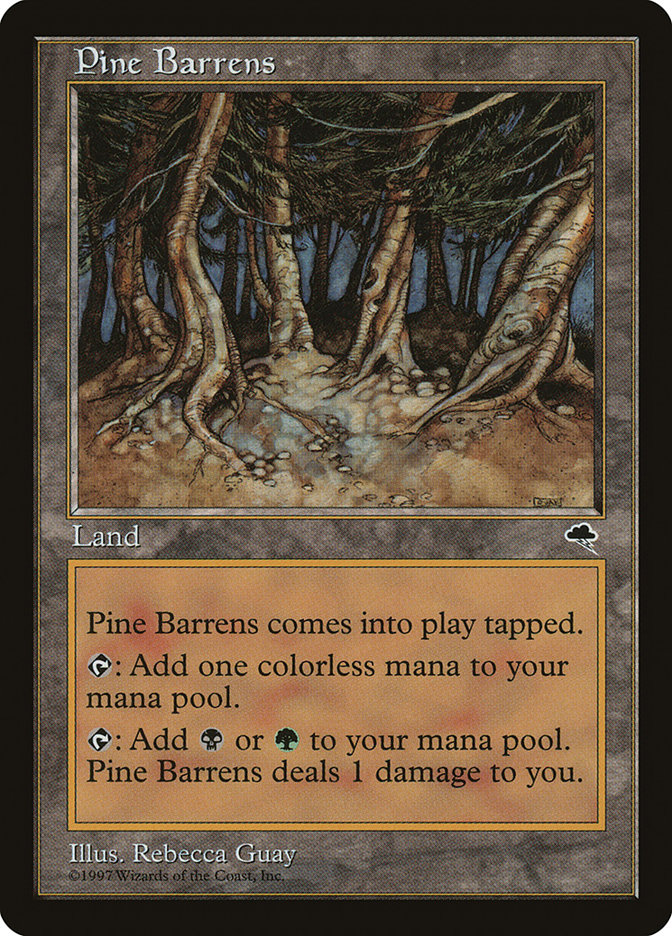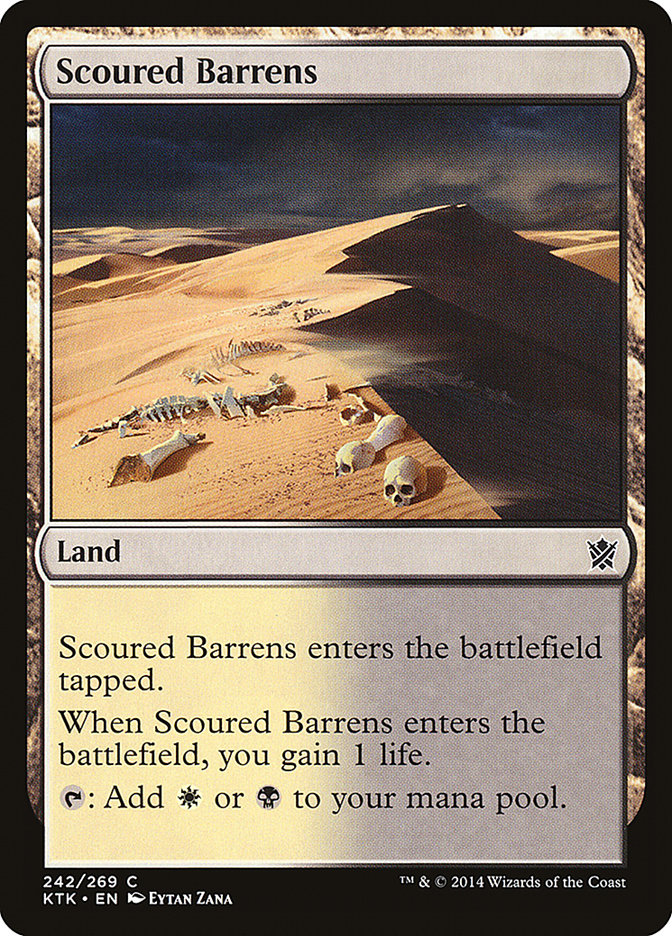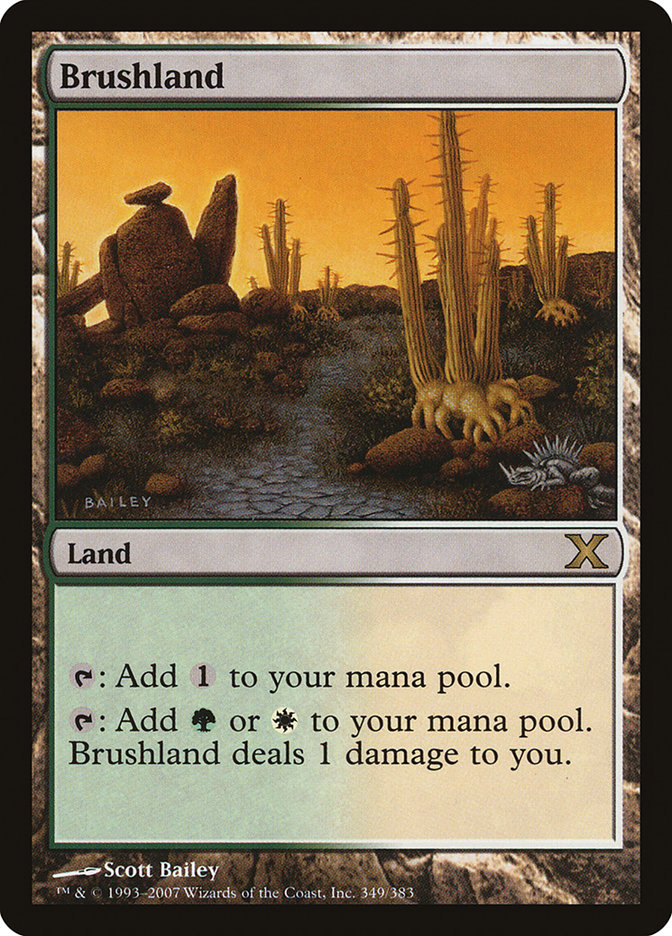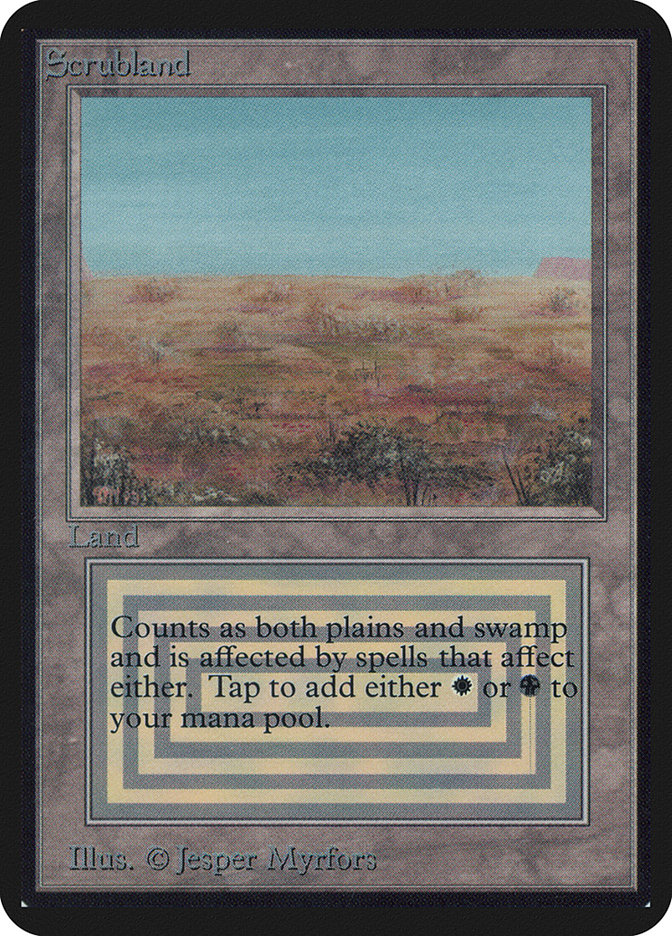Of the five basic land types, the Swamp has an argument for being the most specifically evocative…and possibly the most misnamed, compared to what’s been depicted on cards with that title.
Wikipedia defines a swamp (in the lowercase-s) sense as “a wetland that is forested.” One can’t help but notice the other basic land name, “Forest,” right there in the short definition. In fact, later on in the same article, Wikipedia defines a bayou (again, in the lowercase) as simply the word for swamp in the dialects of the southeastern USA.
Forested wetland? Check.
“Wetland” is of course not so resonant a name as “Swamp.” “Swamp” conjures in the mind a series of sensations to go with the images: the texture of mud at the water’s edge, a certain scent of decomposition or decay, perhaps the buzz of mosquitoes or other water-loving insects. And yet, when it comes to lands that produce black mana, the more general notion of a wetland frequently prevails.
Recent History
Consider the basic Swamps of Amonkhet block, beginning with the regular-layout cards from Amonkhet.
While one might see occasional trees in these three illustrations, they’re all far from being “forested.” In fact, leaving aside the overall sense of gloom versus being sun-drenched, there’s precious little to differentiate Amonkhet’s Swamps from its Islands.
Returning to Swamps, now let’s take a look at the full-art versions of Amonkhet and Hour of Devastation.
Note how the presence of trees gives an immediate sense of “Swamp-ness,” much closer to player expectations of what Swamps look like.
And now, the Hour of Devastation regular-art versions:
Cut these two artworks out and paste them onto B/R nonbasic lands, and not one person would bat an eye. (I even made a note of this in my Flavor Roundup for the set.) But even when the trees are scarce or absent, the water (or blood) still flows.
Don’t Drink the Water
In fact, one has to go all the way back to New Phyrexia to find a Swamp that doesn’t have a visible water source on it. That’s not to say prominent, merely “visible,” even if that’s the trickle of sewer-water on a Return to Ravnica piece. The Jung Park Battle for Zendikar regular-art version looks like it might be waterless, but the full-art version shows more clearly the silvery river at the bottom of the image.
The Mephidross, the main Swamp area on what once was Mirrodin and is now New Phyrexia, keeps with the “metal world” theme by being the fantasy equivalent of a toxic waste dump. Chemical sludge replaces the life-giving water, and a bilious yellow-green fog called necrogen that turns living creatures into Zombies saturates the land.
Other rare exceptions to the “Swamp means water” rule reinforce worldbuilding in much the same way. On the plane of Alara, the Swamps of the “dying shard” of Grixis with only ink-like remnants of what once had been streams contrast with the geometric wetness of the Esper version and the dark lushness of the Jund Swamp.
Trees
Of course, sometimes Swamps are missing the trees instead of the water. On the bright and sunny world of Lorwyn, where everything is twee and cute until a Faerie decides to stab one for fun, trees are optional but lily pads are mandatory. On the all-urban plane of Ravnica, trees are in short supply among the underground waterways that pass for Swamps. Good luck getting one’s Commander table to let one put a certain Mercadian Masques Swamp on the battlefield with Selfie Preservation.
Tellingly, the Euro lands, which have illustrations of specific places in Europe, in two cases showed landscapes without trees and with at most a stick or two hinting at woods outside the frame. The depiction of the United Kingdom’s Lake District National Park on a certain Euro Swamp doesn’t have a tree in sight. Ditto the one depicting the Camargue in France. Only the Ardennes Fagnes Swamp representing Belgium has a prominent tree.
Notably, the Camargue, Lake District, and Ardennes Fagnes showcase three types of wetland distinctly different from the swamp. The Camargue is a marsh, more populated by grasses and reeds than trees; the Lake District illustration shows a bog ecosystem with accumulations of peat; and the Ardennes Fagnes, translated from the French, shows a fen, notable for its alkaline rather than acidic water.
Beyond the Basics
Not surprisingly, when Wizards of the Coast has to name nonbasic lands producing black mana, it will branch out into related wetland terminology. Playing off the three Euro lands, we’ve seen bogs…
…marshes galore…
…and even a fen!
Intriguingly, “Fen” is more frequently an adjective than a noun in Magic, as in Fen Hauler and Fen Stalker (and the compound word “Fengraf” in “Haunted Fengraf”). For that matter, “Wetland” has also made it into Magic, albeit only as an adjective and on a blue card, Wetland Sambar.
Yet another name for black-mana-producing lands is an umbrella term more specific than “swamp” but less specific than “wetland.” A “mire” is a peat-dominated wetland, according to Wikipedia, and by the same definition can include swamps, bogs, and fens. The related term “quagmire,” which is a subset of a mire that has shaky ground unsupportive of one’s weight, has entered general use as a metaphor for an unpleasant and difficult-to-resolve situation.
As with “fen” above, “mire” is more common as a modifier than as a noun in land names.
And the card simply named “Quagmire” is not a land at all but an enchantment. It was printed all the way back in Legends, before many of today’s naming conventions were refined. Coincidentally, Quagmire’s illustrator was Dan Frazier, who handled the Swamps of Limited Edition Alpha, Magic’s very first set.
While moorland (also seen as just “moor”) doesn’t have to be wetland (if the Lake District were all wetland, “Herdwick Shepherd” James Rebanks wouldn’t be able to keep his flocks), it’s often treated that way in Magic, even when the term becomes separated from black mana, as on Geist of the Moors, set on Innistrad. Moorland Drifter, on the other hand, offers a counterpoint.
And no discussion of moorland is complete without acknowledging the set Shadowmoor. The English and German words for “moor” are the same, and in German, the cards called “Ashenmoor” in English became “Aschenmoor” in translation. Notably, the card Cinder Marsh had been translated as “Aschenmoor” years earlier, in Tempest.
Offbeat
Ecosystems blend into one another; the criteria for categories such as “fen” or “bog” or “swamp” are human impositions on a natural continuum. What separates Eventide’s Flooded Grove, a land that can add blue or green mana to one’s mana pool, from Wikipedia’s “freshwater swamp forest” or “flooded forest,” for instance?
Returning from the gloom of Shadowmoor to the sunny world of Lorwyn, not every land producing black and green mana has the “swamp-forest” interaction one might expect. Gilt-Leaf Palace has a waterway within a forest, but a stream in a river does not necessarily make for a wetland.
The “death or corruption in a forest” motif is notable on Innistrad and elsewhere. Foul Orchard and Tainted Wood impose evil upon a terrestrial forest; the Amonkhet version of Foul Orchard, with its sarcophagi as prisons of living death, is particularly eerie.
Other lands reverse the formula by showing a place associated with death being reclaimed by nature. Woodland Cemetery explains this process through flavor text, while Overgrown Tomb does it in the name.
In flavor terms, the Golgari control what passes for wetlands on Ravnica, as noted above; this connection is spelled out most clearly on Golgari Guildgate. The flavor text reference to the “starving and sick,” the desperate and the outcast, has a strong echo with the medicine/poison duality explored in Journey into Nyx’s Temple of Malady, set on Theros.
And in the spirit of reclamation, comparing the Fate Reforged (“before”) and Khans of Tarkir (“after, in one timeline at least”) versions of Jungle Hollow shows how a swamplike environment can evolve while still remaining roughly recognizable; the Sultai structure has disappeared, while the trees have grown.
Long before Oath of the Gatewatch solidified “Wastes” as the name of the colorless basic land, there was Llanowar Wastes, with a name emphasizing the lack of productivity of the land in economic terms. (Said lack of productivity is one reason why so many wetlands have been destroyed; their ecological value does not bring in the money.) Another example of low-productivity land is the “barren,” as in Pine Barrens.
“Pine Barrens” as a name fascinates me, as it’s a rather specific ecological reference strongly associated with North America. Unlike wetlands, barrens are associated with dry and largely infertile soil, as Magic’s other “Barrens” amply demonstrate.
Of course, while the Scoured Barrens of Khans of Tarkir show only sand dunes and dead bones, the earlier Fate Reforged version shows the life-giving river that led the Abzan to settle there. And barrens aren’t just dead places. They can be brushland, scrubland…
…and in Magical terms, Scrublands have been Swamps all along. Shrub swamps, anyone?


